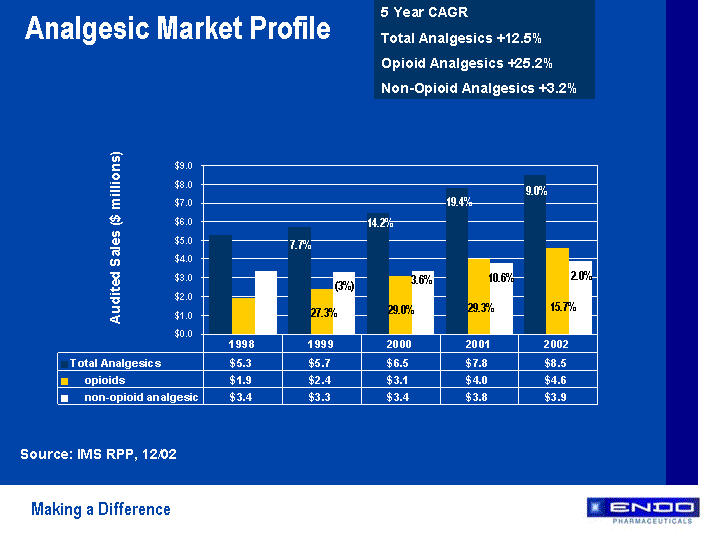The Opioid Quandary
Opioids in our society continues to fuel highly charged opinions from those who refuse to reconsider their position regardless of available complete opioid facts and truths. The media has gained momentum on defining opioids as “taboo” for longterm Chronic Pain citing their ineffectiveness, addiction, and overdose deaths triggering a national healthcare crisis.
Recent media attention from published opioid articles clearly shows their support for only one particular viewpoint. The result has been construed by some as “fear mongering by zealots”. Labeling all Chronic Pain opioid users as being the cause of the opioid national healthcare crisis has been an unsubstantiated and unfair posture.
Without question, America does have a critical opioid problem. Depending on who you ask you’ll get a wide range of polarizing opinions and answers as to why we have an Opioid Quandary; a state of uncertainty. Chronic Pain patient, primary care physician, pain specialist, pharmaceutical representative, psychiatrist, pharmacist, FDA, & politician agree on just one point….opioids are complicated and controversial.
mypainweb feels it’s essential to provide complete facts to help clarify and resolve the Opioid Quandary. Incomplete, inaccurate, and selective half-truth opioid “snippets” assures continual opioid misunderstanding, confusion and fear.
mypainweb understands the complexity of opioids along with their inherent adverse side affects. Opioids have been an important component in helping manage my Chronic Pain for the past 20 years. Visit mypainweb to learn about my first-hand experience with opioids along with reviewing extensive opioid information and resources.
Why the Opioid Quandary?
Here are a few of the obvious reasons:
- potential adverse & dangerous side affects from opioids including depression, addiction & overdose
- “thinking opioids are safe” because they’re FDA approved & prescribed by doctors
- over prescribed by doctors who have little to no opioid pharmacology education
- unused opioids left in the home are unsecured allowing them to be non-medically used by others leading to abuse, addiction and possible overdose death
- easily abused for the euphoria, “high”
- increasing trends of opioid misuse, abuse, addiction and overdose
- despite record levels of opioid prescriptions and opioid consumption more people suffer from Chronic Pain
- widely used among middle school and high school kids
- considered a “gateway” to illicit drugs such as cocaine and heroin
Here are a few “obscure” reasons:
- opioids are one of the most prescribed medication and have been routinely used for the past 100 years, but they have not been properly researched & studied for longterm non-cancer Chronic Pain. Opioid use is well studied, documented and accepted for acute & cancer pain
- The Big Pharma effect:
* Big Pharma (top 11 pharmaceutical corporations) has created a trillion dollar opioid industry
* Big Pharma uses aggressive, and at times, deceptive marketing & sales tactics
* solid, growing customer base of more than 100 million Americans suffering with Chronic Pain with huge global growth potential
* Big Pharma’s inevitable launch of “AD” opioids. The Abuse Deterrent opioid is a new opioid with a protective coating
* Big Pharma has settled significant opioid litigation that’s gladly absorbed as a manageable cost of doing business. Litigation as applied today is not a deterrent
- FDA’s allegiance to Big Pharma lobbying at the expense of protecting citizens
- America’s “War on Drugs” has proven to be a 40 year $1.5 trillion failure
- Chronic Pain patients demanding their doctor do something to take their pain away
- patients literally “give themselves” to their doctor ; choosing not to learn, understand & take control of their Chronic Pain healthcare
- ignorance; some will defend their Pro-Con position regardless of facts
- media’s agenda; selective journalism/reporting
- no incentive for Big Pharma to create a safe, effective, non-addictive pain med
- fear; lack of perspective vs other health issues
- little to no opioid pharmacology education resulting in many doctors over-prescribing opioids without providing necessary patient selection & monitoring
It doesn’t take long to understand why America has an Opioid Quandary.
Getting a handle on America’s Opioid Quandary and how does it compare to other potentially harmful habits?
The following graphs provide reliable statistics that serve as a “framework“ in understanding the scope of Americas’s Opioid Quandary. These comparisons are not an attempt to minimize or defend the level of tragedy caused by opioid abuse, addiction, and overdose deaths.
On the contrary, reporting these seldom seen opioid facts are important to establish an accurate Opioid perspective. You will see that the vast majority of Chronic Pain sufferers do use opioids safely and effectively for long term Chronic Pain as prescribed by their doctor.
With that being said, Long Term Opioid Therapy for severe long term Chronic Pain isn’t the answer either. Read on to learn more facts that are hidden as much of the Opioid Truths rests below the iceberg’s tip far below the water’s surface.
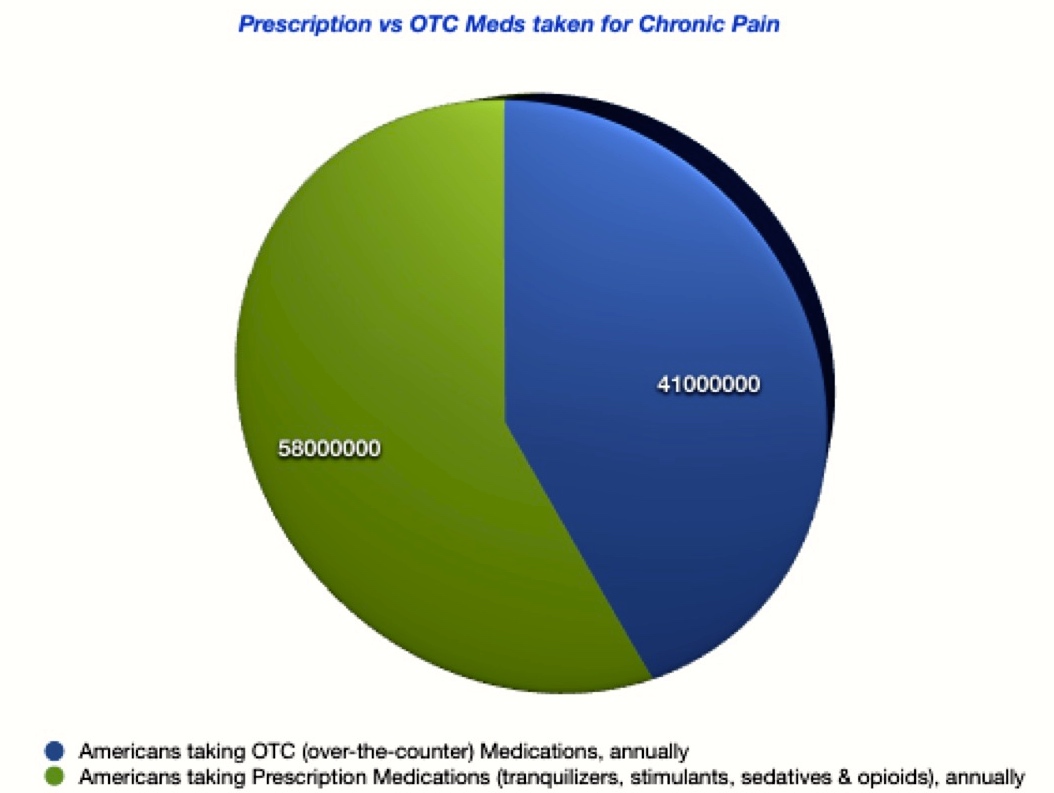
Sources:
http://www.cdc.gov/homeandrecreationalsafety/overdose/facts.html
http://www.painmed.org/patientcenter/facts-on-pain/
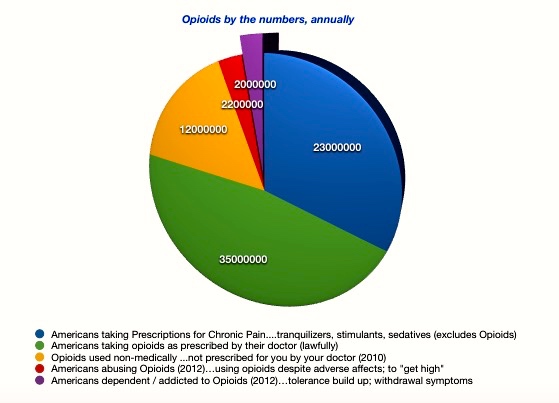
Sources:
http://www.painmed.org/patientcenter/facts-on-pain/
http://www.cdc.gov/homeandrecreationalsafety/overdose/facts.html
http://braeburnpharmaceuticals.com/opioid-dependence-recovery/about/
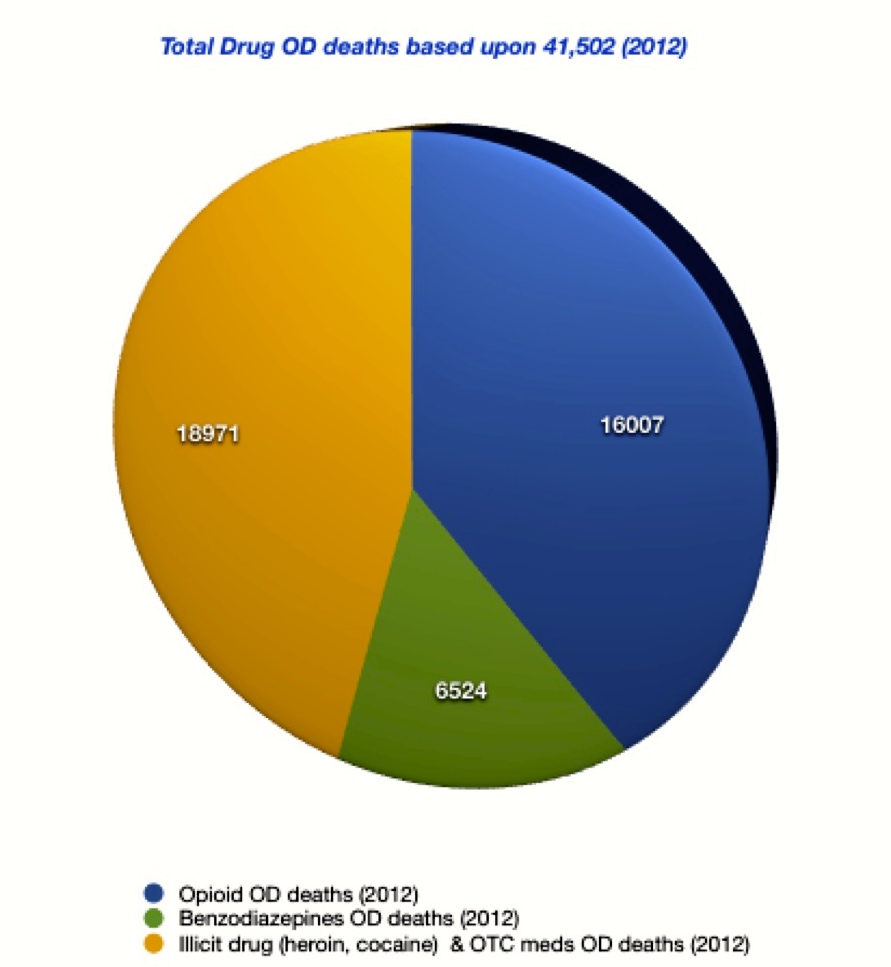
Source:
http://www.cdc.gov/homeandrecreationalsafety/overdose/facts.html
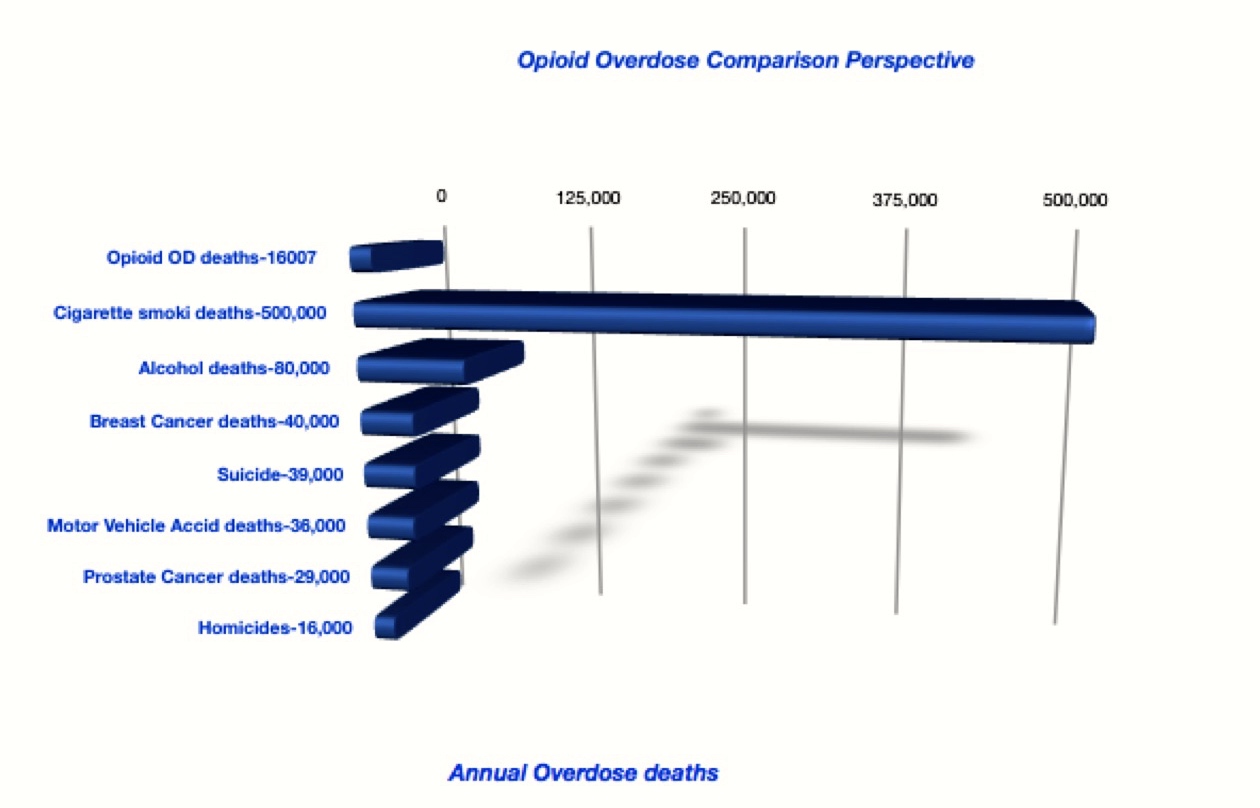
Sources:
http://www.cdc.gov/homeandrecreationalsafety/overdose/facts.html
http://mattsub.blogspot.com/2013/01/our-hysterical-approach-to-chronic-pain.html
http://www.cdc.gov/tobacco/data_statistics/fact_sheets/adult_data/cig_smoking/
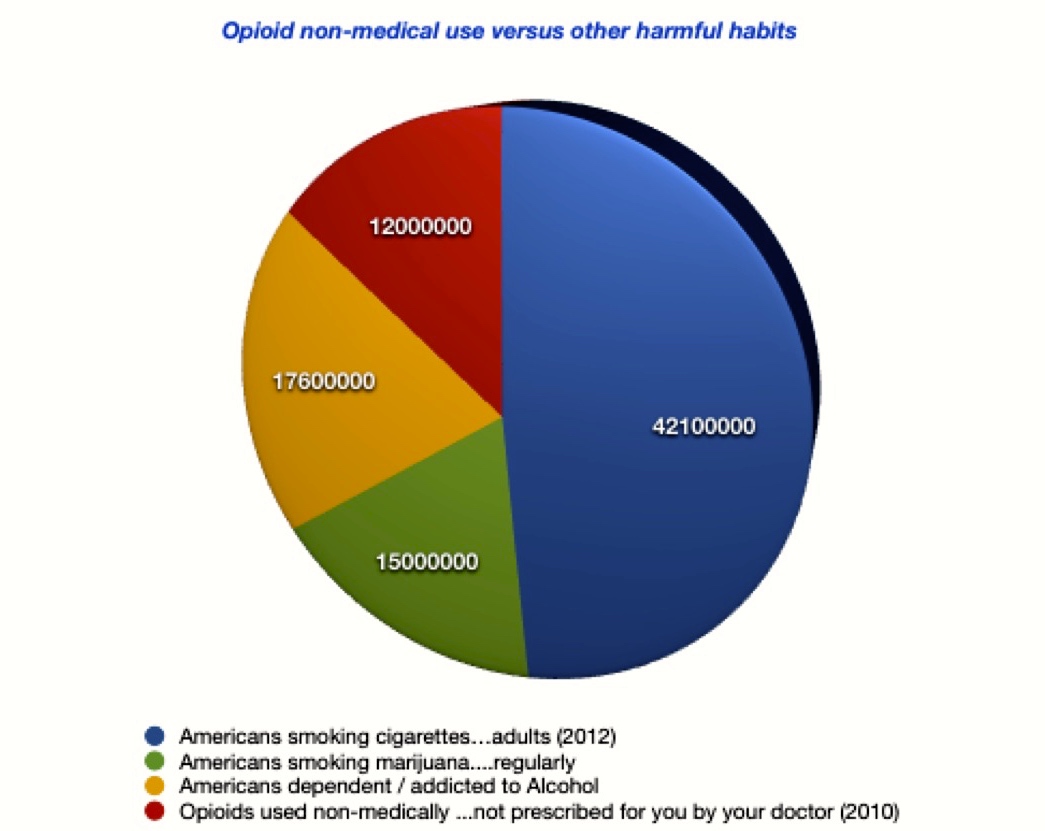
Sources:
http://www.psychologytoday.com/blog/reading-between-the-headlines/201205/is-marijuana-addictive
https://ncadd.org/for-the-media/alcohol-a-drug-information
http://www.whitehouse.gov/sites/default/files/ondcp/policy-and-research/nsduhresults2011.pdf
http://www.painmed.org/patientcenter/facts-on-pain/
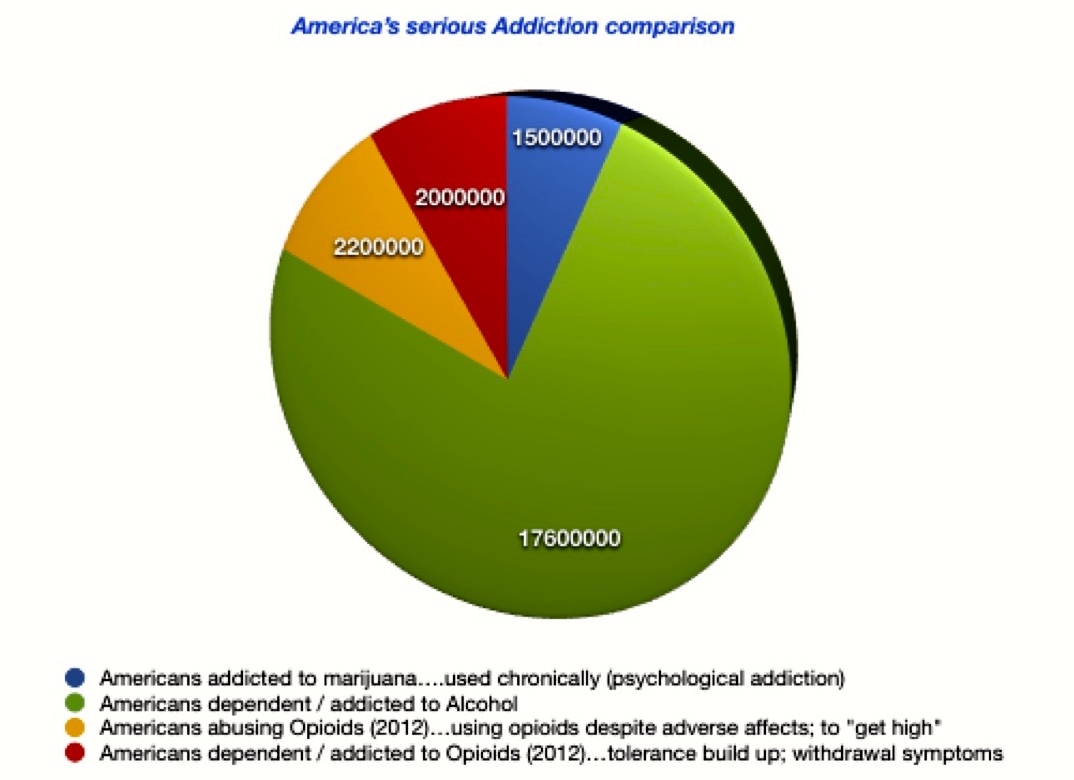

Sources:
http://www.psychologytoday.com/blog/reading-between-the-headlines/201205/is-marijuana-addictive
https://ncadd.org/for-the-media/alcohol-a-drug-information
http://braeburnpharmaceuticals.com/opioid-dependence-recovery/about/
While opioids are a very real problem in America the vast majority of Chronic Pain sufferers use opioids safely and effectively. With that being said, the increasing trends of those abusing opioids non-medically leading to addiction and overdose death is tragic. Real Opioid Reform must be initiated to debunk the status quo and shift the paradigm.
Opioid Reform must be more comprehensive and encompassing then just limiting opioid access to all. Balancing opioid accessibility to those that legitimately require them to help manage their Chronic Pain while restricting opioid access to those that seek opioids non-medically for the “high” sets the stage for the Opioid Quandary.
The Opioid Quandary “escalates” when Big Pharma’s trillion dollar opioid industry interests are combined with careless healthcare prescription guidelines and the FDA’s controversial actions and decisions.
What to do?
Waiting and hoping for our government to fix the Opioid Quandary is not an option. We’ve seen our government’s 40 year $1.5 trillion “War on Drugs” failure.
Click on the following link to read more about America’s “War on Drugs”:
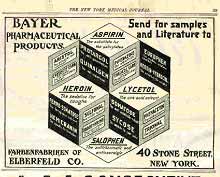
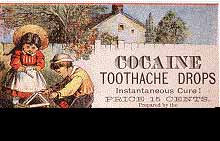
We’ve been down this road before. Click on the following link to read about how America chose to trade our late 1800’s-early 1900’s national opium addiction crisis by introducing hydrocodone, another powerful opioid which is at the center of today’s Opioid Quandary:
America’s opium addiction traded for hydrocodone
Big Pharma will continue to manipulate and deceive to duplicate and expand the success they’ve amassed in the U.S. on a global scale. Aggressive sales, marketing and promotion strategies with effective lobbying efforts will insure continued record levels of opioid painkillers in the marketplace.
Just what is Big Pharma?
Big Pharma refers to the world’s 11 largest pharmaceutical corporations. Collectively they are a formidable force. Big Pharma made a net profit of $711.4 billion from 2003 to 2012. Six of these companies are headquartered in the United States: Johnson & Johnson, Pfizer, Abbot Laboratories, Merck, Bristol-Myers Squibb and Eli Lilly. In 2012 alone, these top 11 companies earned nearly $85 billion in net profits. According to IMS Health, a worldwide leader in health care research, the global market for pharmaceuticals is expected to top $1 trillion in sales by 2014.
Click on the following link to read more:
How did Big Pharma get so Big?
In a word…..Advertising. Advertising medications/drugs direct to consumers is called direct-to-consumer (DTC) advertising. Pharmaceutical companies that market therapeutic agents (medications) directly to consumers is unique to the United States and New Zealand. The United States represents the largest DTC advertising market and accounts for approximately 50% of global pharmaceutical sales (with the U.S. having only 6% of the world’s population).
Prior to 1985, pharmaceutical companies primarily advertised and marketed directly to doctors. Between 1985 to 1990 pharmaceutical companies began using DTC advertising for at least 24 drugs. Soon after, Big Pharma experienced an explosion in growth using DTC. Watch any program on TV, the Internet and listen to the radio and you will experience multiple medication/drug advertising.
Click on the link below to review the timeline of pharmaceutical advertising:
Pharmaceutical Advertising Timeline
In the United States, the Food and Drug Administration (FDA) is the
government agency with the authority to regulate DTC advertisements.
The FDA has noted an increase in DTC advertising and the crucial role
of regulation.
Click on the following link to read more about the FDA’s DTC responsibilities:
The $300 billion a year US pharmaceutical industry spent $3.1 billion on advertising prescription drugs directly to consumers in 2012.
DTC prescription drug advertising rose from $12 million in 1989 to $340 million by 1995. $2.24 billion was spent on DTC prescription drug advertising in 1999; double the $1.1 billion spent in 1998.
In 2000, for every $1.00 spent on advertising, pharmaceutical retail sales increased by $4.20.
In 2007, the pharmaceutical industry was estimated to be spending $4.8 billion dollars a year advertising prescription drugs directly to the public. In 2008, the sale of prescription drugs was a $291 billion dollar a year business in the United States.

On May 26, 2011 the Congressional Budget Office released its study, “Potential Effects of a Ban on Direct-To-Consumer Advertising of New Prescription Drugs”, in response to congressional proposals about restricting new prescription drugs from DTC advertising for their first two years. According to the study, the average number of prescriptions for new drugs with DTC advertising is nine times greater than prescriptions for new drugs without DTC ads.
Big Pharma does more to insure their “Bigness” …. Lobbying
Big Pharma demonstrates its power, political might and social influence over the nation’s governments and agencies, its health care systems, its doctors and hospitals, as well as the psyche of the American people. With the help of staggering profits and 1,100-plus paid lobbyists, the industry has gained powerful leverage on Capitol Hill.
From 1998 to 2013, Big Pharma spent nearly $2.7 billion on lobbying expenses — more than any other industry and 42 percent more than the second highest paying industry: insurance. And since 1990, individuals, lobbyists and political action committees affiliated with the industry have doled out $150 million in campaign contributions.
Click on the following link to read more specifics:
So what the beef with Big Pharma’s advertising & Lobbying? Plenty….
It begs the question: Is Big Pharma satisfying a need for medication, or merely creating the need for medication?
The Pro-Con Arguments for advertising prescription medication directly to consumers is the basis for the existing gargantuan debate.
Click on the link below to read the Pro-Con advertising prescription medication debate:
Pharmaceutical Advertising Pro-Con Arguments
The chart below reveals a correlation which is believed by some to be a culprit causing our Opioid National Health crisis:
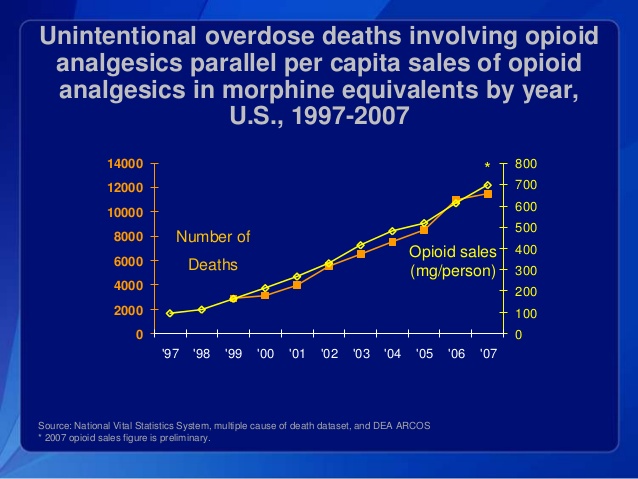
Click on the following link to learn more:
This early infamous advertising technique is feared by some to still be in practice today, albeit with greater sophistication and savvy:

The distinguished doctor who has been introduced as the “inventor of the artificial heart” turns to the camera and says, “Just because I’m a doctor doesn’t mean I don’t worry about my cholesterol.” He then recommends people use an anti-cholesterol drug, Lipitor, and to show just how confident he is in his own ticker, he rows across a lake. It was a killer advertisement, part of a campaign put together at a cost of US$ 260 million for drug company Pfizer. But it relied on the audience being unaware of several important facts: Robert Jarvik, the distinguished “doctor” in the boat, had never been licensed as a medical doctor, could not legally prescribe anything and was not the inventor of the artificial heart (at least according to three former colleagues at the University of Utah). It later turned out that he hadn’t even rowed the boat. Welcome to the world of direct-to-consumer advertising.
This Big Pharma’s “insider” opinion offers further insight into this core issue:
“Executive Officer William Burns of Swiss pharmaceutical company, Roche, stated publicly that recourse to direct-to-consumer ads was “the single worst decision” drug makers had ever made, because of the damage it had done to their image. USC’s Capron, formerly director of Ethics, Trade, Human Rights and Health Law at WHO in Geneva, concurs. “DTC has been something of a double-edged sword for [pharmaceutical companies]. It has certainly increased demand, but it has also made companies more vulnerable to the criticism that they are simply trying to maximize profits.”
Click on the following link to read more:
World Health Organization Bulletin
Despite FDA’s efforts we can expect more of the same…..
While the FDA is responsible for protecting citizens from unsafe prescription drugs/OTC medications and disingenuous pharmaceutical DTC advertising, it’s likely we can expect more of the same.
The “questionable & cozy” relationships among Big Pharma and industry leaders is yet another cause of concern as some cry foul from “conflict of interest”. Here’s an example of such a concern:
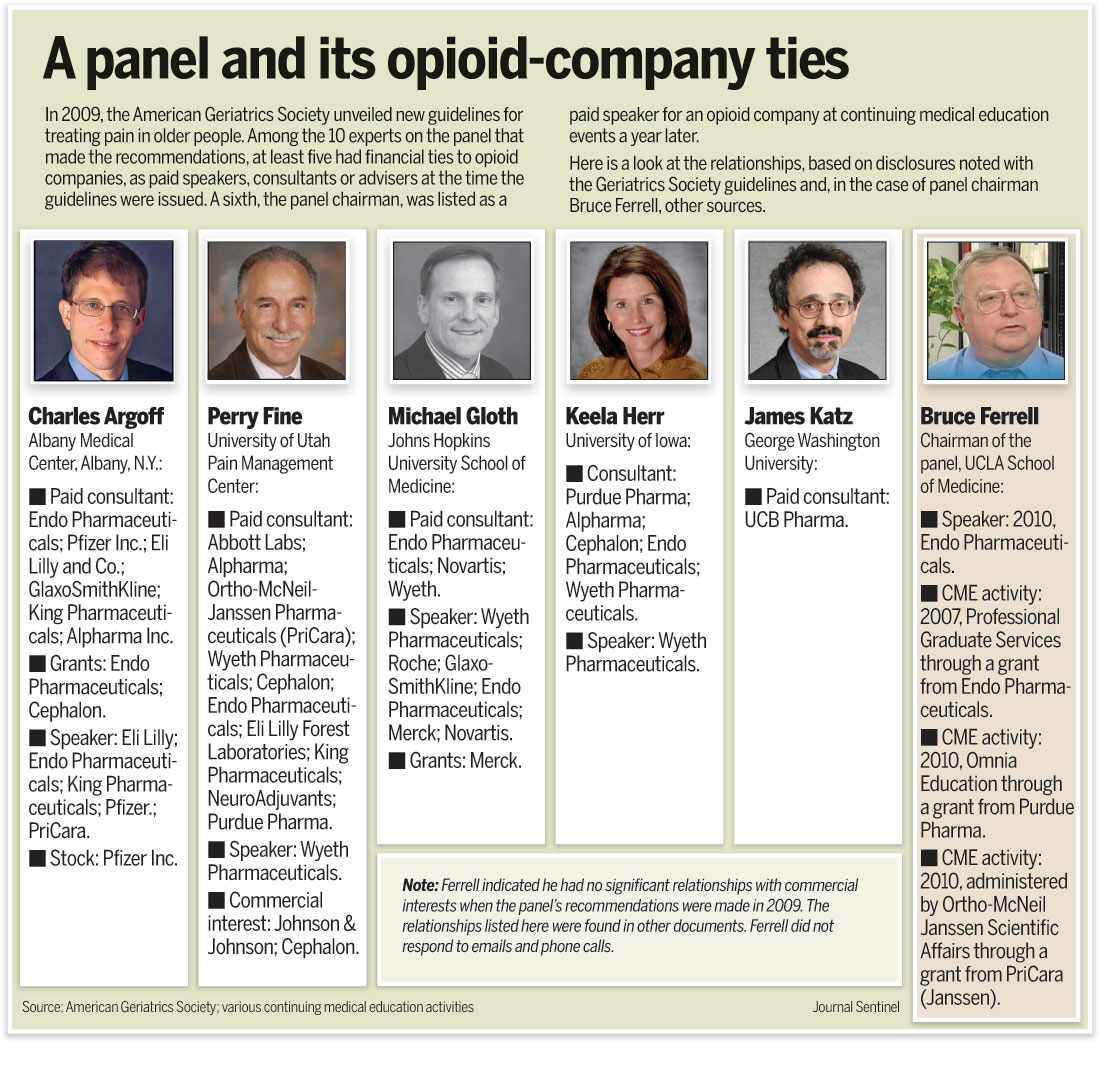
Among the 10 experts on the panel that made the recommendations, at least five had financial ties to opioid companies, as paid speakers, consultants or advisers at the time the guidelines were issued, the investigation found. A sixth, the panel chairman, was listed as a paid speaker for an opioid company a year later.
Read more at the following link:
The FDA will continue to approve more dangerous super-opioids like Zohydro and Subsys. Some accuse the FDA of serving Big Pharma at the expense of the American citizens. The FDA’a action of flipping certain opioids between Schedule II and Schedule III classification will have little impact, if any.
Big Pharma will attract more investors and implement more DTC advertising as they promise and will deliver continued record setting quarterly revenues and profits. Big Pharma will further expand as new pharmaceutical companies join the fold.
Below is an enticement article describing the attractiveness of the “Opioid Market” found within the investment industry:
Headline:
When Experts Focus Too Much On One Issue… A Company Might Be A “Buy”
Article:
“I have recently run across an intriguing investment story – a story that entwines rough and tumble board politics, patent expiration, an extraordinarily focused management team (intent on doing whatever it takes to grow), pharmaceutical creativity, and the inevitable growth of the “Generic” drug space[1]. By way of upfront “disclosure”, I am not fully convinced → Read More”
Click on the link below to read the entire invetsment article:
Here’s the incredible projected global financial growth from just one relatively new pharmaceutical company, Teva:
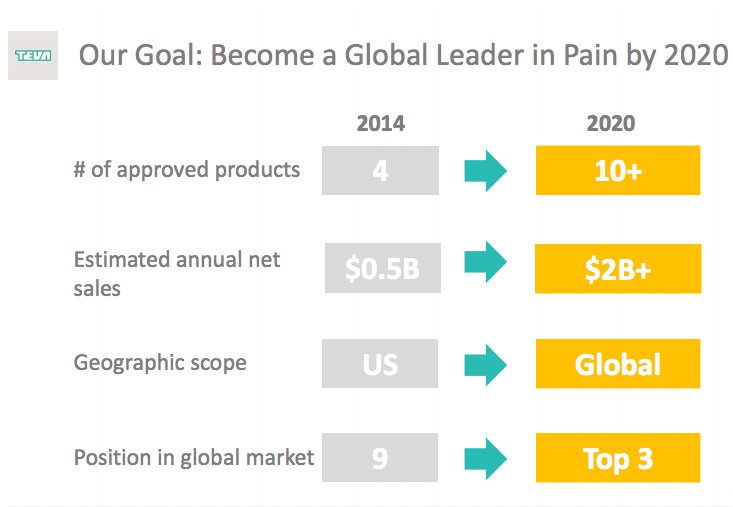
Source: Markettamer
Teva, like many other pharmaceutical companies manufacturing opioid pain medications, are banking their future phenomenal financial growth, in part, on the soon to be introduced new Abuse Deternent Opioids. Also known as AD Opioids, these Abuse Deterent Opioids are said to be manufactured in such a way that abusing by crushing, snorting, smoking, etc., are much more difficult as compared to non-AD Opioids.
Click on the link below to read more about AD Opioids:
Here’s another positive financial opioid market outlook….this one is from Endo Pharmaceuticals. The following are a few slides from a past Endo investment presentation. These type of investment presentations are standard fare among Big Pharma to attract investors:
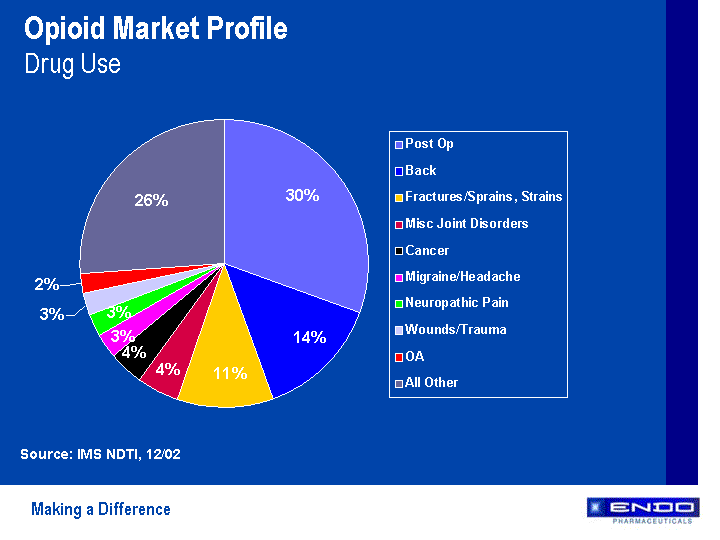
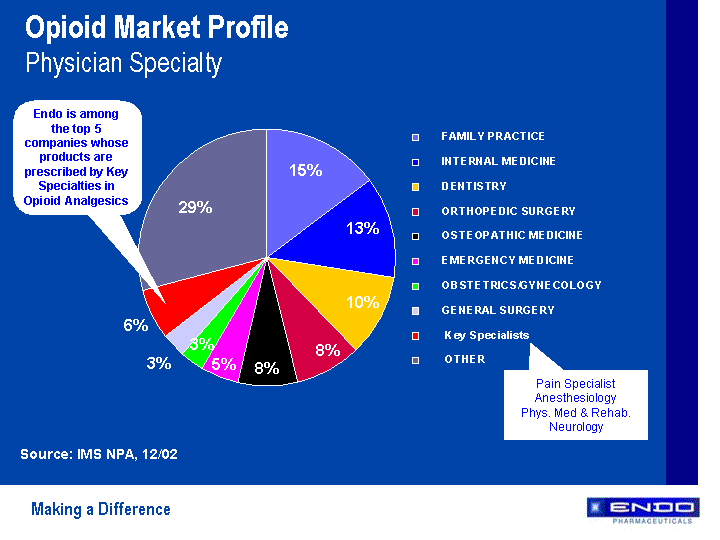
The few charts above shows the bankable growth from the opioid painkiller market.
Click on the following link to review the entire Endo Pharmaceutical Investment Presentation:
Endo Pharmaceutical Investment Presentation
On a Global Scale…..
Chronic Pain is a major public health problem not limited to the U.S. In America, Chronic Pain is estimated to affect more than 100 million people and about 20–30% of the population worldwide (roughly 1.4 billion-2.1 billion people).
This represents unprecedented financial growth for Big Pharma. We can expect to see, tragically, massive increases in those abusing opioids worldwide. Rates of Opioid Addiction and Overdose deaths will likely significantly increase as well. It’s estimated that today 26.4 million-36 million people abuse opioids globally.
The following chart shows the source of Chronic Pain around the world:
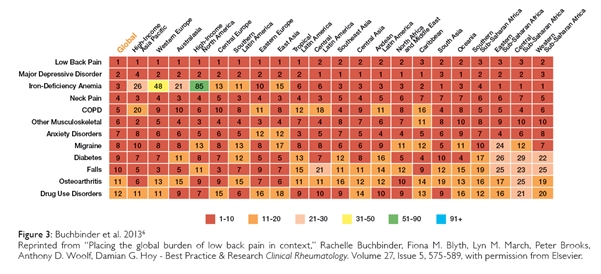
With the above chart in-mind, you can be assured Big Pharma is using the chart below to strategically target opioid painkiller growth:
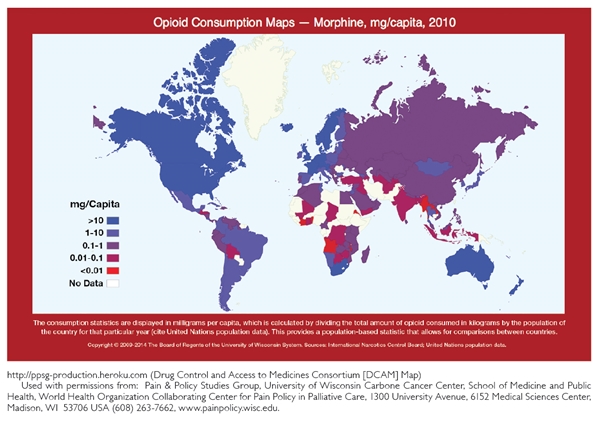
Click on the following links to learn more:
American Society of Anesthesiologists: Global Burden of Chronic Pain
Social Science Research Network
Understanding Big Pharma……click on the following link to review a brief guide:

Big Pharma facing the Opioid Quandary music….
During the past several years Big Pharma along with other phramaceutical corporations have faced lawsuits for their actions which include:
Criminal Action: Off-label promotion & failure to disclose safety data.
Civil Action: paying kickbacks to physicians, making false and misleading
statements concerning safety, reporting false best prices, poor manufacturing practices and underpaying rebates owed under the Medicaid Drug Rebate Program.
Between 1991- 2012 Big Pharma along with other pharmaceutical corporations paid out over $17 Billion in settlements including Glaxo’s $3 billion settlement which is the largest civil, False Claims Act settlement on record and Pfizer’s $2.3 billion settlement which included a record-breaking $1.3 billion criminal fine.
Click on the link below to review the list of the largest top pharmaceutical setllements:
Largest Pharmaceutical Settlements
Remember, Big Pharma’s annual sales exceed $330 billion with an estimated annual DTC advertising & marketing budget of $72 billon, so a few $billion in annual fines likely not to make much of an impact on their annual financial results.
While they claim financial demise from agreeing to pay such fines, the settlements are a nominal fee they are willing to pay as a planned cost of doing business.
City of Chicago files suit against Big Pharma….

On June 2, 2014 the City of Chicago sued Purdue Pharma LP, Purdue Pharma Inc., The Purdue Frederick Company Inc., Teva Pharmaceutical Industries Ltd., Cephalon Inc., Johnson & Johnson, Janssen Pharmaceuticals Inc., Endo Health Solutions Inc. and Actavis PLC.
Chicago, among other claims lodged in its 121-page complaint, alleges the defendants misled the public and doctors about the health risks of opioid pain medications like OxyContin and Percocet by engaging in false advertising, fraud and deceptive marketing through a conspiracy that supposedly boosted their profits and created an increase in addiction and health care costs.
Click on the following link to learn more:
The Chicago lawsuit makes direct comparisons between the tactics of the 1990’s $206 billion tobacco litigation.
The following link will share more details:
You can read the actual City of Chicago lawsuit filing at the following link:
Two counties in California filed similar lawsuits just days after The City of Chicago filed their complaint.
mypainweb will continue to monitor headlines and post progress highlights of this unusual litigation ad it develops.
It’s likely Big Pharma will land on their feet despite facing a barrage of continuing lawsuits. History shows these actions prove to not be a deterrent.
Sounds dismal?
Not at all…..
When is Enough…..Enough??
On an almost daily basis I read as much as I can about any and all Chronic Pain topics. I created the following infograph to capture the essence of the continuing Big Pharma controversies:

During 2014 Big Pharma (Top 25 Pharmaceutical Companies, globally) earned over $536 Billion with the Medical Device Industry earning over $38 Billion. Their combined 2014 earned revenue amassed over $574 Billion.

U.S. doctors and teaching hospitals received $6.49 billion from drug and medical-device makers in 2014, according to new government data on the financial links between the companies and the people who prescribe their products.

These payments range from the royalties paid to hospitals to help develop products to fees provided to medical experts to speak at a dinner with colleagues. The payments are listed in two broad categories: money to fund research and payments to entertain doctors or compensate them for consulting or other non-research purposes.
Click on the following links to read more:
Drug and Medical Device Makers Paid Billions
Medical Device Company Revenues
Ky. settles lawsuit with OxyContin maker for $24 million
Many watch groups and experts claim “foul” when Doctors and Hospitals receive direct payments from Big Pharma and the Medical Device Corporations. In 2014 direct payments to Doctors and Hospitals was $3.26 Billion. Paying Doctors and Hospitals to prescribe their medications and use their medical devices represents less than 1% (actually 0.56%) of Big Pharma and the Medical Device Industry revenues.
In my opinion, this is “much ado about nothing”. Think about it. Doctors that spend time to learn about new medications, treatments and medical devices to help their patients should be compensated. Doctor’s that understand the importance of continuing their medical education through networking with Pharmaceutical and Medical Device Companies should be encouraged not scrutinized. This collaborative effort used to exchange experiences, results and ideas helps to solve a wide range of medical problems and concerns.
Use the link below to search a particular Doctor’s direct payments from Big Pharma and Medical Device Companies:
Direct Payments to Doctor Search
The vast majority of our Doctor’s receive appropriate payments for traveling related expenses and guest speaking. Unfortunately, there appears to be a few Doctor’s receiving way more than their “fair share” from Big Pharma and the Medical Device Industry. Direct payments in the form of incentives and ownership do raise questions about ethics and inappropriate business relationships. Without question, these arrangements must be evaluated to insure revenue generation practices don’t impede upon patient healthcare safety and quality.
The real story and legitimate argument that should be raised concerns the paltry-at-best direct payments Big Pharma and the Medical Device Industry makes towards funding research related activities.
Remember……combined 2014 revenue earnings from Big Pharma and the Medical Device Industry was over $574 Billion. How much of their 2014 record-setting earnings were payments to fund research activities?? The answer is a disappointing 0.56% of their revenues or $3.23 Billion.
Interestingly….. Big Pharma and the Medical Device Industry spent the same amount on Research during 2014 as they did on Doctors and Hospitals. These 2 key expenses represent only about 1% or $6 Billion of their 2014 revenue earnings of $574 Billion.
In the face of our Chronic Pain National Healthcare crisis exceeding 100 Million Americans, it’s painfully obvious most available chronic pain treatments don’t work. Combine that with the fact that Doctors and Patients are demanding safer Chronic Pain medications other than powerful opioids leaves one with the logical question:
What is Big Pharma and the Medical Device Industry spending their remaining 99% or over $568 Billion fortune on??
Here are a few key major expense lines:
- TV Commercial Advertising
- New drug / device development
- High priced celebrity spokespeople
- Washington DC Lobbying
- Salaries, Compensation & Benefits
- Buying / Merging with their competitors
- Insuring high profit margins and ROI for share holders & investors
- Legal, Litigation & Fines
- Spacious Office Space
Past successes of our Big Pharma and The Medical Device Industry are numerous. However, it’s apparent that financial gain & performance has taken precedent over solving societies real health problems like our Chronic Pain epidemic. Some Big Pharma corporations have reported an all-time high 42% profit margin significantly outperforming banking, car making, oil and media industries.
Learn more about Pharmaceutical Industry Profit Margin at the following link:
Pharmaceutical Industry Profit Margin
Many argue spending more on research related activities is absolutely critical. Payments for research related activities at this negligible 0.5% of earnings of Big Pharma and The Medical Device Industry will insure continued growth of our Chronic Pain epidemic. This strategy will, of course, allow them to keep reporting record breaking profit margins.

Increasing Big Pharma and The Medical Device Industry payments to research related activities is the only way we will develop new approaches to create new medicines and medical devices that will deliver safe, measurable, real Chronic Pain Relief to millions of suffering people. It’s obvious their healthy budgets have plenty of room for them to do the right thing…..
How do we end the Opioid Quandary?
Start by “stop finger-pointing” and “blaming” someone else. The “blame game” just continues to make us vulnerable and at risk.
Instead…..take charge of your healthcare and take the time to understand. Reading about mypainweb Opioid Truths is an empowering, effective first step.
Understanding will prove to be the critical component to shift the paradigm and initiate needed Opioid Reform. Doctors and patients alike must better understand opioids for what they are; dangerous, potentially lethal medications that will destroy lives if misused or abused. A best practice would be to meet with a pain specialist (such as an anesthesiologist) for opioid therapy. In the very least, request the least powerful opioid like Tramadol or Nucynta in the lowest available dosage, and discuss any changes you want to make with your prescribing doctor before you make any changes. Report any changes in mood along with any physical side affects without delay with your doctor.
Under no circumstances should you store unused opioid medication in the home. Existing opioid prescription medication in the home, prescribed for you by your doctor, must be kept safe in a secured lock-box. Unsecured opioids left in the home can be as lethal as leaving a loaded firearm, or a bag of heroin on the kitchen counter.
Tell your kids about the dangers of opioids. Then tell them again, and again, and again. If your kid’s schools don’t offer a comprehensive Opioid Educational Program for students then request it. Click on mypainweb.com/Youths for a “ready-to-use” student Opioid Education resource.
Opioids must be available to those suffering from Chronic Pain. Restricting and, or limiting opioid access to those that require them is “cruel and unfair”. Monitoring in the strictest sense must be done to avoid the ease of obtaining and using opioids non-medically. Most opioid abusers obtain opioid painkillers from relatives and friends; not prescribed to them by their doctor.
Opioids have been around and used for a longtime. It’s about time we properly research opioids to create a safe, effective Chronic Pain medication without addictive and adverse side affects. Until then, we must learn and understand opioids to insure our safety and quality of life.
Is there an Opioid Solution?
Absolutely….
Click on this link to learn about real Opioid Solutions
The mypainweb opioid links below will give you a factual, thorough, comprehensive and truthful opioid understanding:
Should you, or that of a loved one, find yourself in a medical situation involving opioids mypainweb will help you feel confident that you will make safe and effective opioid decisions.
Questions, concerns, or comments?
Feel free to email me at help@mypainweb.com
